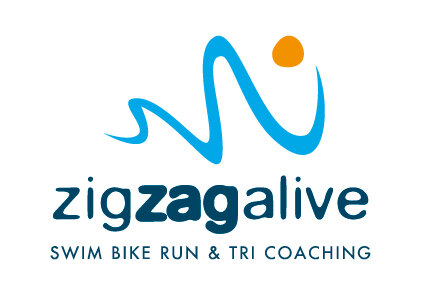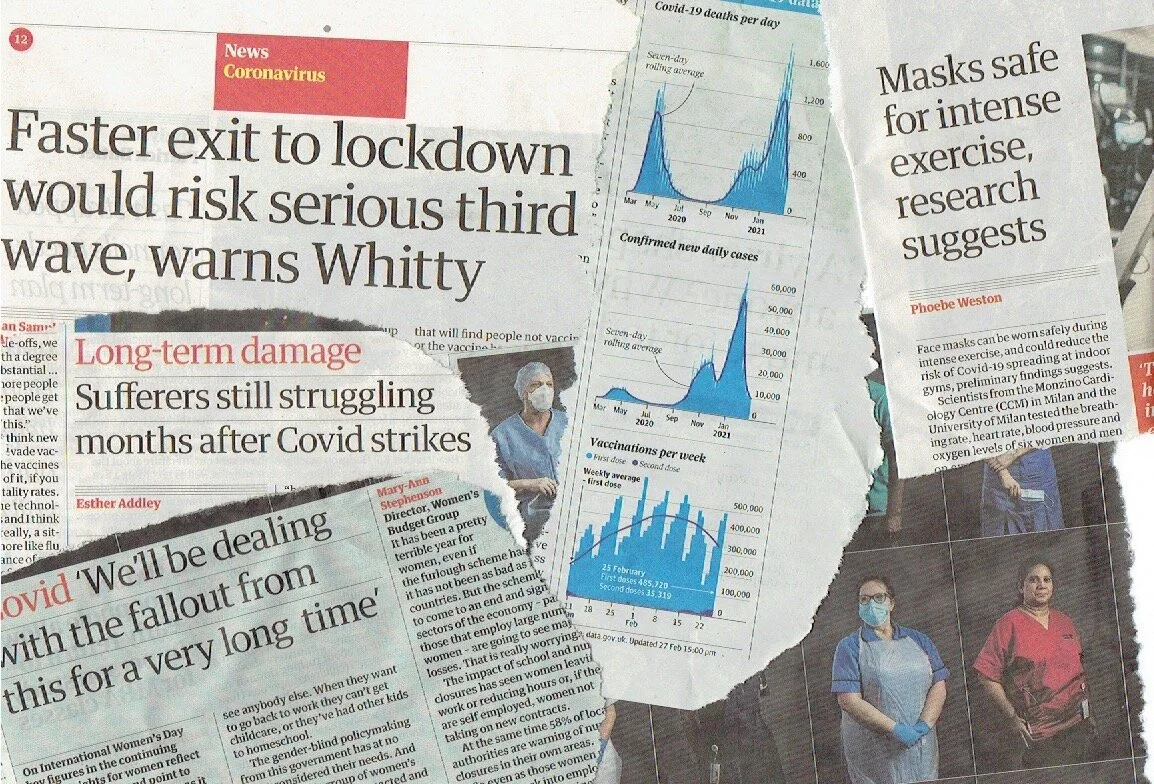While we are increasingly turning our minds to the exciting prospect of training venues reopening and club sessions restarting, what about those athletes who caught the virus? Their journeys are certain to be even more hesitant, layered with extra levels of nervous anticipation and uncertainty.
This post shares some of the experience of a GB Age Group duathlete recovering from the virus – the way we have gone about a very measured and cautious return to bike and run training. It is not a ‘here’s what to do’ or one size fits all plan. Nor is it meant in any way to downplay the seriousness of what many are experiencing - which we know to be far more severe for some.
We thought we would openly share our experience and the lessons along a slow road that still has a long and uncertain way to go. It would be great to know how others are doing so we can learn together.
An Unlit Path
Back in my former working life, there was an anecdote I heard several speakers use to disarmingly open their presentations – of a distraught drunk in the middle of the night, desperately looking for his keys around a lamppost. When asked by a concerned passer-by if that’s where he remembered dropping them he replied “no – it was somewhere over there” pointing far off into the darkness.
“So why are you looking here?”
“Because this is where there’s some light.”
When it comes to guidance on athletes’ recovery from COVID-19 I have a similar sense: some light but not really where it’s most needed. As the virus is a new and evolving phenomenon there is no long term research or case studies to turn to. The little available research I have found points to athletes’ ability to recover from training still significantly compromised some weeks after the symptoms have eased and they feel ready to get back to training. Add to that, we have the alarming evidence of Long COVID, some people suffering severely many months after contracting the virus, with no discernible reason for their susceptibility.
So there continues to be a strong element of feeling our way in the dark for how best to recover and gradually return to training, learning together through cautious trial and error.
Before going further, let’s hear from the man himself.
“My symptoms consisted of a cough and what felt like a head cold… spells of feeling washed out and tired… fits of coughing throughout the night and days spent sleeping almost upright. No loss of taste or smell though.”
It Started with a Cough
On a turbo session, to be exact: a persistent cough that worsened as the session went on and got more debilitating. (Did he stop – no, of course not!)
A few days later, home tests confirmed he, his wife and her parents all had the virus.
Catching the virus played on his mind a lot, not least having carefully stayed clear of it for almost ten months. The frustration of not being able to exercise, key to his overall wellbeing, and worries over potential effects, such as long term scarring of the lungs, all weighed very heavily.
So what did we do?
Well, initially very little. In fact, in terms of anything resembling even light exercise, nothing. At all.
We waited around ten days for the symptoms to all-but pass – a lingering dry cough stubbornly persisting while his energy levels and sense of wellbeing gradually returned.
In the meantime, though, we decided to change our weekly Coaching Calls, usually focused on the training, to a twice a week call where we’d tell each other about inspiring athletes we’d each chosen to research – a few of these were recounted in the previous blog post, Legends in Lockdown. Runners Haile Gebrsellasie, Emil Zatopek and Henry Rono and the cyclist Gino Bartali all joined the others to share their extraordinary stories.
Week 1: Super Cautious Return
Then, when it felt right to give something a little more active a go, we tried out two short bike sessions on the turbo, placed in the garage so that he could easily stop at any point if needed. All on the least resistance and a maximum of 30 minutes. On alternate days we introduced a short routine of stretches and light mobilisation exercises to reawaken the key muscle groups and get back some flexibility and muscle memory. Again a maximum of 30mins with the possibility of stopping at any point.
“that felt a bit like running at altitude… As the run progressed the breathing became a little bit laboured but relaxing and focusing on my breathing helped.”
That first weekend then rounded off with a prescribed walk with his long suffering (and also rehabilitating) wife round their village.
And on the Sunday a super light walk/jog – our man inevitably doing more running than the walking I suggested, but in itself a positive sign.
We also kept an eye on the heart rate data for each session – two of which showed a mid ride rise and fall without any corresponding change in perceived exertions. Plus we looked at weekly average heart rate and HRV data – all slowly going in the right direction.
Early days and feeling cautiously optimistic.
Weeks 2 & 3: A Settled Two-Week Pattern
“I really enjoyed this run… the South Downs looking great with a blanket of snow covering them.
I felt relaxed and in control on the run. No issues to report and really pleased with this week’s training. Just a stretching session left to do.”
We then agreed a very light step up for two weeks, each week identical – no progressive build or extras.
Our pattern was to keep the maximum 30min light spins on alternate days, plus the stretching and mobility, but now with maximum 30min walk/runs on the other days and a slightly longer walk at the weekend. By keeping to the same routine over two weeks the thinking was to be able to know more precisely the effect of reintroducing light running.
Weeks 4 & 5: A Sprinkling of Magic
Into the next two week fixed routine and we decided to again keep the light spinning and stretching as before but add in just a little more focused additions and variety to the alternate day runs – each increased now to a maximum of 40mins.
On some days this simply incorporated some light “gliding and floating” mid-run, gently accelerating and immediately decelerating, momentarily striding out and coming back – all with a focus on no tensing up, everything fluid and light. Other days stipulated finding a new route or using an old favourite, the Three Views of Moment Run. And another involved an out and back route with a focus on maintaining exactly the same easy pace throughout.
It is worth saying progress has not been uniform nor free from lingering effects of the virus. Some of his comments on the sessions point to muscle tightness (likely to be down to long hours on zoom calls) and unnerving bouts of irritating coughing. Nonetheless, all the available data reassured us of a steady and safe build up of fitness.
“As each session progresses I feel stronger and fitter, but I still have a cough that I can’t shake off. It can linger the day after… and feels like the virus is still attached to my lungs, which plays on my mind.”
Week 6 & 7: Mixing Up the Runs
And now we come up to date and our current two week block of training.
It’s clear the after effects of the virus are still working themselves out so we continue to be very cautious and gradual.
We’ve decided to slowly move toward a more distinctive mix of runs, inching toward the pattern we would typically have in the past – while keeping the light 30min spins and stretching routines as constants.
For now two runs a week move up to 45mins maximum, with light gliding and floating and other sparkles thrown in; and at the weekend we go up to 50mins then 60mins for what will eventually, all being well, become the over-distance run of the week.
What Have We Learnt So Far
“Coronavirus has enabled me to become more patient in my approach to recovery, as much as it’s frustrating to not be at the level I was, I know it will be unwise to push myself more… and I know I’m more fortunate than others”
that there is a long way to go and things remain uncertain, so continuing vigilance and caution required
in the absence of light in the right places we have to feel our way tentatively and cautiously, checking each step of the way together with a trusting openness and honesty
being ready to have extra rest days, without a sense of missing out or guilt
the richness of delving into others’ stories and of sharing them with each other
patience, acceptance and a deeper perspective
And his advice:
“talk to others about how you are feeling, listen to your body and don’t rush back – have a plan and be prepared to make adjustments should the recovery not be as quick as you would have hoped.”
As always, please leave any reflections, your experience and ideas in the comments box below. It would be great to know of others experiences and lessons learnt along these difficult roads to recovery.
And stay safe and well – there’s still a way to go.

